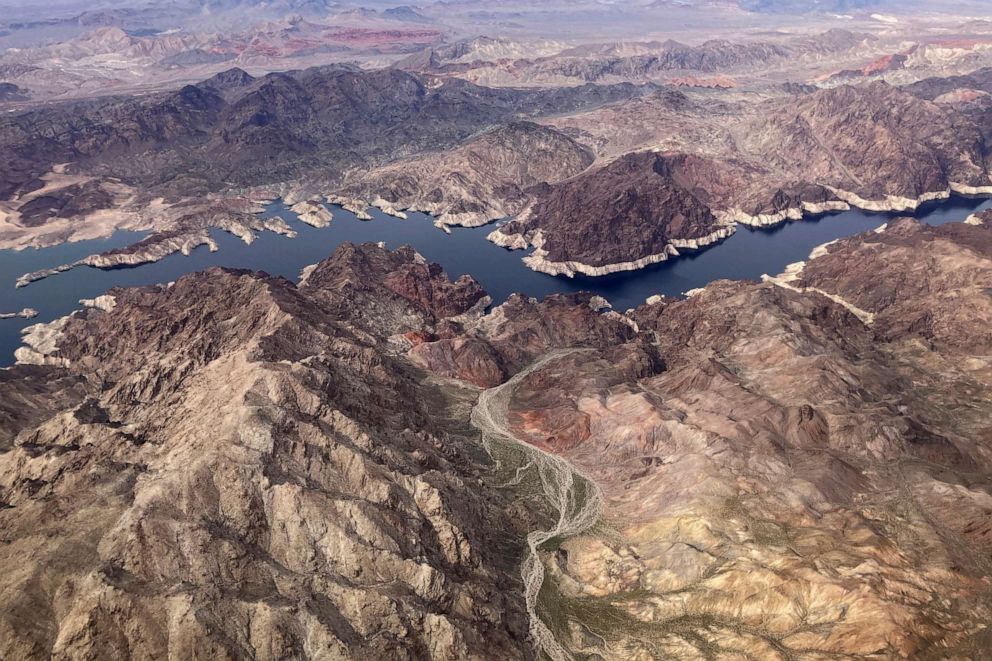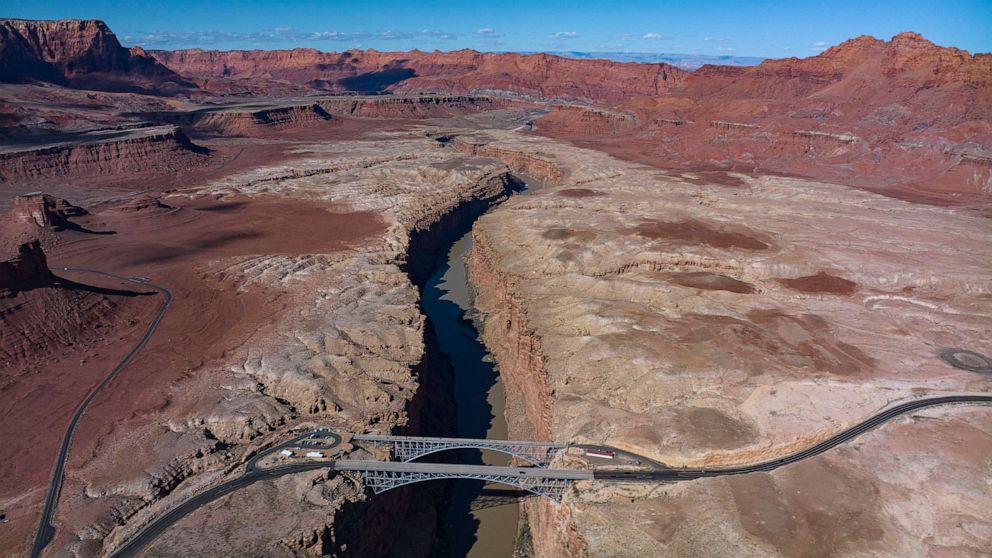





The Biden administration has reached a landmark deal with states dependent on the Colorado River to conserve water amid the decadeslong drought.
The three Colorado River lower basin states — California, Nevada and Arizona — will be required to conserve an unprecedented 3 million-acre-feet of water through 2026, the U.S. Department of the Interior announced in a press release Monday.
The deal is voluntary among the three states and will prevent the need for federal intervention to mandate cuts.
Last month, the U.S. Bureau of Reclamation proposed a plan to cut water allotments to states to combat dwindling water levels along the Colorado River. It gave the seven Colorado River states the options of no intervention — allowing the states to come to their own agreement; cutting the amount of water released from the Glen Canyon Dam based on water rights — with California being the priority; or water cuts spread evenly among the states.
The Interior Department is temporarily withdrawing the draft Supplemental Environmental Impact Statement (SEIS) proposal published last month in light of the states’ voluntary conservation proposal. Representatives from the seven Colorado River Basin states have agreed to the submission of the conservation proposal and have requested the proposal be fully analyzed as an action alternative under SEIS, according to the Interior Department.

A bathtub ring shows where the water mark on Lake Mead once was along the boarder of Nevada and Arizona, March 6, 2023, near Boulder City, Nev.
John Locher/AP
The department will conduct a full environmental impact assessment before officially accepting the plan, it announced.
The plan also says that if Reclamation’s predictions for Lake Mead expect it to fall below 1.025 feet at any point in 2024, 2025, or 2026, the states will have 45 days to propose a plan to protect the water levels in Lake Mead.
If they do not come up with an acceptable plan, the department will be able to intervene.
The Colorado River Basin supplies drinking water to 40 million people in the U.S., as well as two states in Mexico, fuels hydropower resources in eight states and remains a crucial resource for 30 tribal nations as well as agriculture communities across the West, according to the Bureau of Reclamation.
The proposal comes as a decadeslong megadrought has reduced water levels in the Colorado River, Lake Mead and Lake Powell — the two largest reservoirs in the world — to record-low levels.

Navajo Bridge over Colorado River at Lees Landing in Vermillion National Monument, Page, Ariz.
Visions of America/Joe Sohm/UCG/Universal Images Group via Getty Images, FILE
The federal government aims to build long-term system efficiency and prevent the Colorado River system’s reservoirs from falling to critically low elevations that would threaten water deliveries and power production, according to the White House.
Officials commended the lower basin states for demonstrating leadership to achieve the substantial water conservation.
“Today’s announcement is a testament to the Biden-Harris administration’s commitment to working with states, Tribes and communities throughout the West to find consensus solutions in the face of climate change and sustained drought,” Interior Secretary Deb Haaland said in a statement.
The agreement was the result of months of negotiation, the according to the governors of California, Nevada and Arizona.
As the West remains on the “frontline of climate change,” it will be imperative for lower basin states to ensure the long-term sustainability of the Colorado River System for decades to come, California Gov. Gavin Newsom said in a statement.
The state leaders acknowledged in a joint press release that the work isn’t over with this agreement and the threats to the Colorado River will continue past 2026.
The cuts will have an immediate impact on the stability of the Colorado River system, and the extra rain and snow from the atmospheric rivers helped provide enough flexibility for states to agree to the cuts, the Arizona Department of Water Resources announced.
“Thanks to the partnership of our fellow Basin States and historic investments in drought funding, we now have a path forward to build our reservoirs back up in the near-term, said Arizona Gov. Katie Hobbs. “From here, our work must continue to take action and address the long-term issues of climate change and overallocation to ensure we have a sustainable Colorado River for all who rely upon it.”
“This proposal does more than just ‘protect’ elevations in the system’s major reservoirs, Lake Powell and Lake Mead,” Arizona Department of Water Resources Director Tom Buschatzke said in a statement. “It builds critical elevation in both reservoirs.”
The vast amount of water conservation will take place in exchange for about $1 billion in federal funding.
The Interior Department has pledged $281 million for 21 water recycling projects, up to $233 million in water conservation funding for the Gila River Indian Community, more than $73 million for infrastructure repairs on water delivery systems, $71 million for 32 drought resiliency projects to expand access to water through groundwater storage, rainwater harvesting, aquifer recharge and water treatment and $20 million in new small surface and groundwater storage investments.
